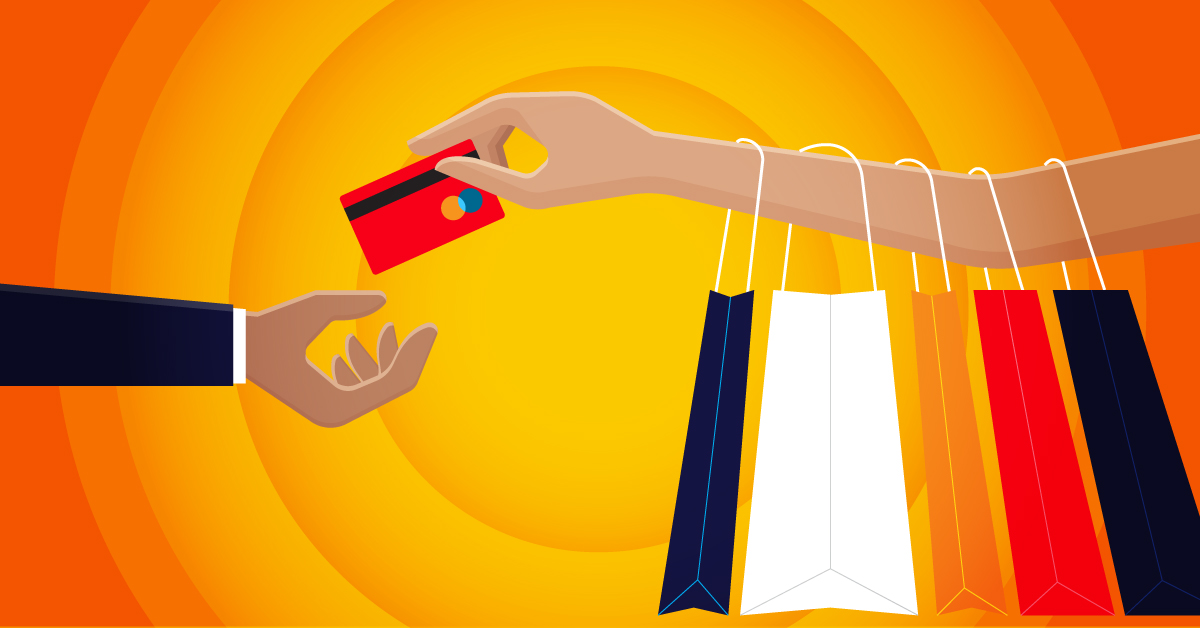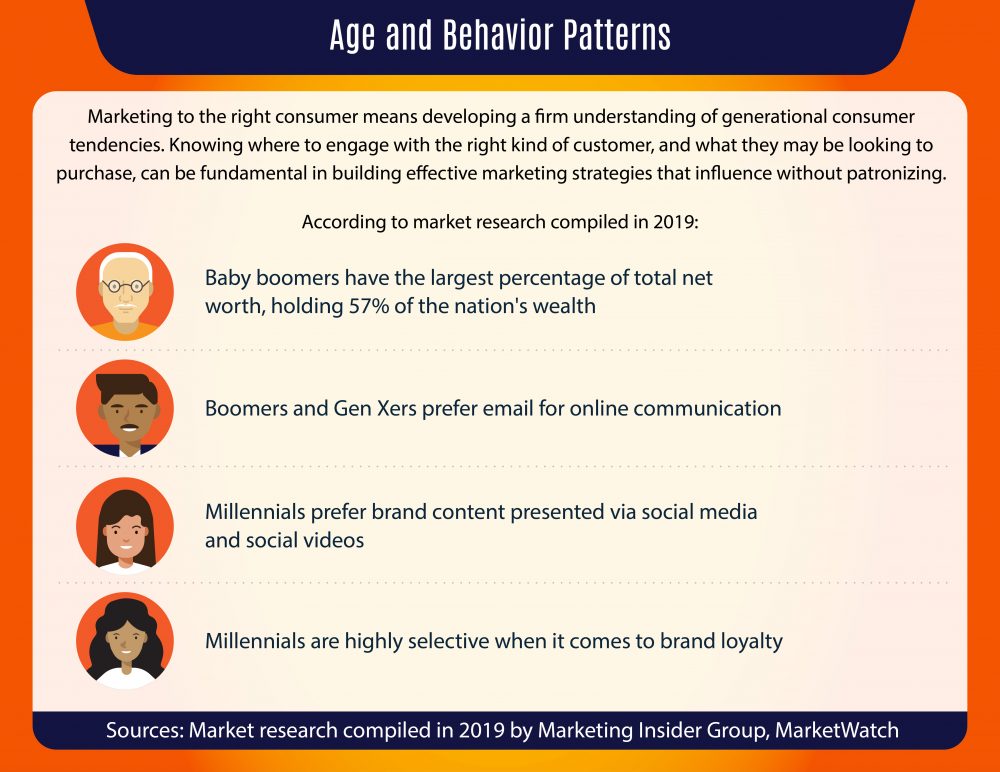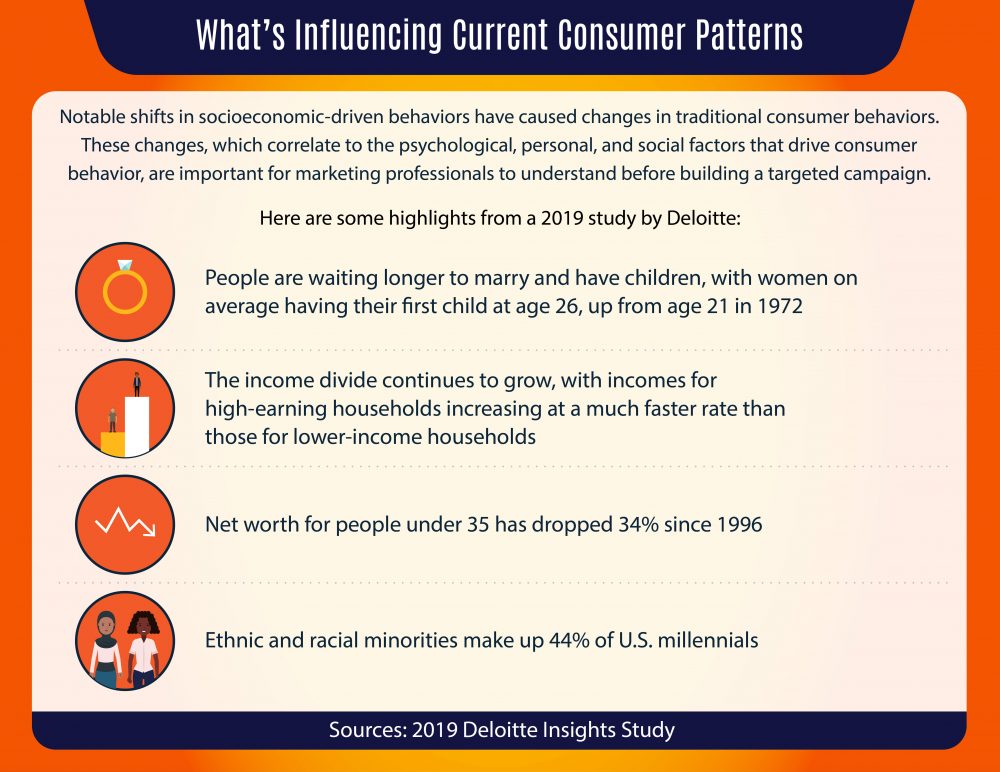What Is Consumer Behavior? Mastering the Art of Influencing the MassesWhat Is Consumer Behavior? Mastering the Art of Influencing the MassesWhat Is Consumer Behavior? Mastering the Art of Influencing the Masses

The psychology of consumer behavior, including the subconscious factors that drive consumers’ actions, is nothing short of fascinating.
Consumer behavior is the study of the elements that influence individuals’ purchasing decisions, including environmental, psychological, and societal factors. Using data, marketers can gain an understanding of how consumers choose products or services, the thought and/or emotional process behind those decisions, and what motivates them to choose one product instead of another. All of this can help marketers craft hyper-targeted advertising campaigns designed to pique the interest of their consumer base.
For example, clothing retailer H&M took a tactical approach to its digital marketing efforts when it partnered with model Ela Velden and fashion blogger Julie Sariñana to showcase its clothing on Instagram. The goal of the widely successful campaign was to tap into consumers’ tendency to trust industry experts. In this instance, H&M wanted to target millennials and Generation Z, knowing that a social media influencer campaign would likely resonate.
Vitamin manufacturer Nature Made tapped into consumers’ “herd behavior” tendencies when it crafted a campaign for its gummy vitamins. In addition to using the United States Pharmacopeial (USP) seal on its ad, which demonstrated the product was endorsed for its purity of ingredients, the ad also featured one of the company’s vitamins being held between the thumb and forefinger of a child. The tagline was simple, yet effective: “We’d vouch for [our vitamins’] purity and potency, but an independent party already has.” Not only did the ad resonate with those who saw it, the specific, targeted messaging helped drive the product’s sales.
Marketers who study consumers’ behavior patterns often find they are successful in using this information not only to attract new customers, but they’re also successful in using it to retain their current clientele. As such, to be successful in this field, marketing professionals must gain a deep understanding of what drives consumer behavior, including the psychological, personal, and social factors that influence purchasing decisions.
The Factors That Drive Consumer Behavior
To understand consumers’ behavior, marketers must first understand what drives their purchasing decisions. For example, studies have shown that familial factors, such as having children, can play a role in which products consumers buy. Individuals’ perception of a brand, and whether owning a high-value item, such as a Rolex watch, is important to their self-identity can also affect purchasers’ decision-making. Shoppers’ age and gender have also been proven to impact how and why they make purchases.
Psychological Factors
There are a variety of psychological factors that play a role in consumers’ buying behavior. For example, marketers need to understand how buying patterns are influenced by factors such as whether individuals are more likely to make purchasing decisions based on needs versus wants. Individuals’ perception of a brand can also influence their buying decisions.
Brand Perception and Exclusivity
Consumers’ perception of a brand will often determine what they buy. For example, some people prefer to spend money on brand-name clothes and products, such as Versace belts and Louis Vuitton purses. In this demographic, high-ticket, luxury items are viewed as status symbols, and buyers who spend money on them are drawn to exclusivity. Some brands, such as Kanye West’s Zeezy sneakers, have launched successful limited-release trends to capitalize on scarcity to drive sales.
Brand Perception and a Desire to Buy “the Best”
A second component of brand perception relates to how good a product or service is when it is compared to its competitors. If someone believes that Apple laptops are the best on the market, they will be more likely to buy a Mac when they purchase their next computer. Apple is the world’s most valuable brand according to Forbes, largely due to high customer satisfaction and a sense of loyalty among consumers.
Perception and Individual Thinking Patterns
Individuals’ perceptions and thought processes also play a role in what they purchase. For example, if Anne and Jane are working late, they may decide that takeout is their best dinner option. Although the primary motivating factor in placing the order is hunger, their perception of the menu items can play a role in what they choose. Anne might order a simple salad, because she believes that’s most healthy, whereas Jane might choose a platter of grilled chicken and vegetables, based on her perception of what a healthy meal is supposed to look like.

Personal Factors
Personal factors, such as an individual’s gender and culture, and whether they understand how the product can be used to solve a problem, such as how microwave-safe food containers can help with meal preparation, have also been proven to affect which products and services consumers buy.
Age
Consumers of varying age groups are often drawn toward different types of products. For example, new parents in their early 20s who are raising a child are likely to buy different baby products than new parents who are in their early 40s. Marketers who understand the age groups they’re targeting are well-positioned to develop appropriate products and advertising campaigns for each demographic. Consumers’ age groups can also determine whether advertising dollars are best spent on newspaper print ads or social media influencer campaigns.
Gender and Sexual Orientation
Recent research has shown that in many households, women are the primary decision-makers when it comes to purchases. Inc. reports that among couples, women do most of the shopping and make 70% to 80% of the purchasing decisions. Marketers may promote different aspects of a product depending on which gender they are targeting. For instance, men typically look at specific attributes of a product, while women focus on the qualities as a whole, according to the Houston Chronicle. However, some marketers are adopting less narrow gender parameters to appeal to younger generations. Companies are evolving their strategies to cater to individual preferences, instead of making stereotypical assumptions based on gender or sexual identities.
Culture and Background
Successful marketers understand how factors such as nationality, religion, and cultural values play a role in consumer behavior. For example, in some countries, such as China and Japan, people are more inclined to make purchases that improve the welfare of a group, such as their family. In the United States, on the other hand, purchasing decisions tend to be more individualized and correlate more to consumers’ personal preferences.
Habits, Interests, and Lifestyle
All consumers have buying habits that are linked to their interests, and marketers must understand who the target audience is for the product or service they are selling. For example, a waterproof, multiuse backpack manufacturer may find it is more successful in marketing to outdoor enthusiasts who like to hike and fish than to stay-at-home moms.

Social Factors
Social factors, such as buyers’ income level, where they live, and their family dynamic, may also play a role in the types of products and services they spend their money on.
Interactions Within Community-Driven Environment
Consumers’ desire to fit in with their friends, peers, and coworkers often plays a role in their purchasing decisions. For example, if most employees at Company X drive a particular brand of luxury vehicle, when other employees buy new cars, they’re likely to choose something similar. It’s all a matter of “keeping up with the Joneses.”
Income Level
The income level of consumers correlates closely with their buying patterns. Whereas low-income consumers may be concerned with buying based on needs versus wants, high-income individuals often have more expendable income and, thus, may be inclined to buy products based on wants instead of needs.
Living Conditions
Living conditions, such as whether individuals rent or own their home, along with the neighborhood in which they live can also play a role in consumers’ decision-making. For example, in-home appliances, such as refrigerators and dishwashers, are bought more frequently by homeowners than people who rent. An individual who lives in the suburbs will be more likely to have a swimming pool than someone who lives in a downtown high-rise. The promotion of a product or service is most successful when it targets the right group.
Family Dynamic
A 2019 article by Marketing Charts reported that in addition to family members having a strong influence on what children buy, 87% of parents surveyed said that their purchasing decisions are influenced by their children. Children were found to have the most influence over the purchase of toys, games, clothes, dining out, events, and outings.
Consumer Behavior Types
Experts agree that there are four main types of consumer behavior: complex-buying behavior, dissonance-reducing buying behavior, habitual buying behavior, and variety-seeking buying behavior. Studying these behaviors can help marketers understand the types of things that may, and may not, influence a purchasing decision.
For example, individuals who are looking to buy an expensive item, such as a boat, are going to be influenced by different factors than individuals who are researching a less expensive purchase, such as a hair dryer. Understanding the factors that can influence a consumer to say yes instead of no can help in designing targeted marketing strategies.
Complex Buying Behavior
Complex buying behavior occurs when an individual buys an expensive and infrequently purchased product, such as a car, new home, or treadmill. Consumers are often highly involved with this type of purchase, and they take time to research the significant differences between various brands. Complex purchases often involve a deep sense of buyer commitment based on their associated costs.
Dissonance-Reducing Buying Behavior
Dissonance-reducing buying behavior occurs when a consumer is highly involved in the purchase of an item, but they have a hard time pinpointing the difference between various brands. For example, if someone wants to purchase a flat-screen TV, and each model they are looking at has the same screen resolution, they may feel a strong sense of conflict or tension. The “dissonance” occurs when a consumer is worried they will make the wrong choice and will regret their decision later. Dissonance-reducing buying behavior can also happen with other types of purchases, such as lawnmowers and engagement rings.
Habitual Buying Behavior
Habitual buying behavior happens when consumers purchase something on a regular basis, but they are not emotionally attached to a brand. The purchase of items such as bread, milk, eggs, and gasoline are possible examples of habitual buying behavior.
Variety Seeking Buying Behavior
Variety seeking buying behavior happens when individuals decide to buy a different product in the same product line, such as a new brand of toothpaste, not because they were dissatisfied with their initial purchase, but because they want to try something new. Other examples may include buyers opting for a new brand of cologne or a new type of hair styling product.
Other Factors That Influence Consumer Behavior
Although each of the types of buying behavior is slightly different from the rest, these four categories do share certain commonalities. For example, the purchasing process is often initiated when a consumer identifies a need, regardless of whether that need is for groceries, an appliance, or a new vehicle. Other factors that influence buyers’ behavior include where a purchase is made and how it is being paid for.
Online vs. In-Store
Where a purchase is made — such as through an online portal like Amazon or Target.com or at a brick-and-mortar store — can play an enormous role in buyers’ behavior. For example, Amazon uses its product recommendation algorithm to recommend a range of products to its users, based on the categories they’ve been browsing, and individuals who are shopping for laptop computers may also see recommendations for mouse pads, printers, and anti-glare screen covers.
In contrast, similar levels of targeted upselling aren’t always standard at a brick-and-mortar store. Businesses have also seen an increased demand for online purchasing options. Ecommerce transactions with U.S. merchants were valued at $601.8 billion in 2019, up 15% from $523.6 billion in 2018, according to U.S. Department of Commerce data analyzed by Digital Commerce 360.
Cash, Credit, or Internet Account
A March 2019 study by the Journal of Retailing and Consumer Services notes that payment methods, such as debit and credit cards, can lead to upticks in consumer spending. The speed and ease of how payments are made can also play a role. For example, a 2018 study by IPSOS found that consumers are 54% more likely to buy when a business accepts payment via an internet account, such as PayPal.
In contrast, consumers who prefer to pay using cash are more likely to restrict their spending because, from a psychological perspective, every purchase is interlinked with an actual parting with physical money.
Integrating Consumer Behavior Patterns in Marketing Strategies
Marketing experts agree that there are numerous reasons for businesses to integrate consumers’ behavior patterns into their marketing strategies. For example, when marketers understand why people buy, they can craft their messaging and devise their branding strategy accordingly. Understanding consumer behaviors can also impact how companies determine pricing strategies. Knowledge of buyers’ behavior patterns can further help companies understand how they can increase their consumer base on social media platforms such as Instagram and Twitter.
Branding Strategies
Branding strategy is about more than creating a logo and a tagline. For a brand to be successful, it must understand who its customers are, the problem it solves for those customers, and the personality it wants to convey via marketing efforts. Companies must understand why their brand exists, what purpose it serves, and the problem it fixes, to effectively communicate their brand’s story.
Technology
Marketers must also understand how tech-adapted their target clientele is. For example, if a brand’s target demographic is college degree holders over the age of 65, it may not be inclined to spend its marketing dollars on Instagram ads, since Instagram is not a place where that demographic spends much time. Technological advances in areas such as voice-activated searches can also be used to collect data that, in turn, can be used to provide data-driven insights into consumer behavior. Marketers should also consider whether target audiences are comfortable shopping online, or whether they prefer in-person shopping experiences.
Engagement
Marketers who study buyers’ behavior patterns understand how to use a brand’s identity to connect with its client base. In addition to helping cultivate stronger relationships with current and potential customers, developing a deep knowledge of consumer behavior can also help marketers forge communication and engagement strategies.
For example, in 2013, Starbucks’ Tweet-a-Coffee campaign, which allowed Twitter users to buy $5 virtual gift cards for their friends via tweet, generated $180,000 in gift-card revenue in its first month. In addition to promoting brand awareness, the campaign brought additional foot traffic into Starbucks stores. The promotion was among the first of its kind, and it not only gave the coffee retailer a valuable tie-in between their clients’ Twitter accounts and mobile devices, it provided it with the email addresses for all gift card buyers and recipients.
Starbucks’ early understanding of how to use social media to capitalize on consumer behavior patterns led to the creation of one of the most successful social media marketing campaigns of all time.
Resources: Tools That Marketers Can Use to Research Consumer Behavior
Marketers can use a variety of tools to research consumer behavior. Below are just a few of the resources they use to gain insights:
Choosing a Career in Marketing
The fields of marketing and digital advertising are evolving rapidly, which is creating numerous career opportunities for qualified professionals. Today’s companies are not only seeking professionals who are multifaceted in their approach, they’re seeking candidates who understand the many facets of consumer buying behavior.
Individuals who have an interest in pursuing jobs in these fields should start by developing the knowledge and skills they’ll need to be successful. Consequently, completing a bachelor’s degree in marketing from an accredited institution is an important first step. Although there are numerous bachelor’s degree programs to choose from, it’s best to take your time and research all of your options. This will help you choose the school and degree program that’s right for you.
Resources: Marketing Industry News and Trends Worth Following
Infographic Sources
Deloitte Insights, “The consumer is changing, but perhaps not how you think”
Marketing Insider Group, “A Guide to Content Marketing by Generation”
Additional Sources
Bizfluent, “Psychological Factors That Influence Consumer Buying Behavior”
Encyclopedia Britannica,”The Marketing Actors”
Forbes, “How Much Data Is Collected Every Minute Of The Day”
Houston Chronicle, “Psychological Factors That Influence Consumer Buying Behavior”
Houston Chronicle, “Social Factors in Marketing That Influence Products”
Market Business News, Consumer Behavior
Maryville University, Online Bachelor of Science in Marketing
Be Brave
Bring us your ambition and we’ll guide you along a personalized path to a quality education that’s designed to change your life.

